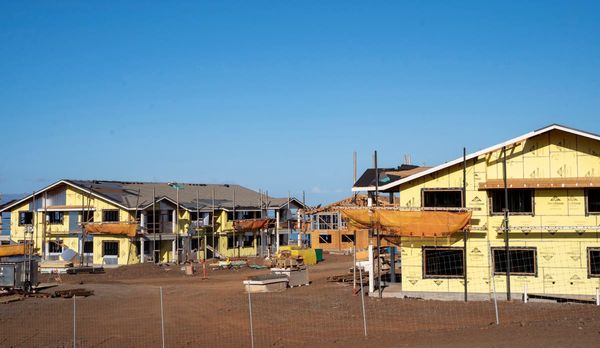
Outside a scruffy cabin marked “Souvenirs” at Russia’s Bellingshausen Antarctic research station, tourists and scientists clank up the metal stairs, keen to escape the blizzard.
Out pokes the bearded face of Denis Ianenkov, a drilling engineer with the Russian Antarctic programme – and part-time shopkeeper – to invite his next cohort of customers into a tiny room with flags pinned to every wall.
The cabin quickly fills with excited tourists, who rearrange themselves periodically to enquire about prices or admire medals; inspect penguin figurines or try iron-on patches on their sleeves.
“We do well out of this,” says Ianenkov with a chuckle. Through his ad hoc currency conversions, Ianenkov accepts cash payment in Chilean pesos or US dollars.
Fridge magnets and keyrings sell for $5 each, fur-lined hats cost $100.
Russian scientists spend the takings on machinery parts for repairs, or on food and mobile phone data. (One Chilean network offers fairly robust reception on King George Island, where Russia and six other countries have research stations.)
And Ianenkov has reason to be optimistic for his tiny polar venture.

According to the International Association of Antarctica Tour Operators (IAATO), a record 105,331 people visited Antarctica over the 2022-23 austral season, continuing a rapid rise.
With the exception of the post-financial crash 2008-09 season and the pandemic-affected summer of 2020-21, when just 15 tourists visited Antarctica, the numbers have risen steadily over recent years.
Most tourists visit the temperate, accessible and wildlife-rich Antarctic Peninsula, where they disembark in Fildes Bay to fly from the Chilean air force’s landing strip which sits above on a shallow plateau.
But while Ianenkov and his colleagues might benefit from a steady stream of wealthy customers – an Antarctic cruise can easily cost £10,000 ($12,700) – the concentration of tourists in highly sensitive areas, and over just a few short months during the summer, has a cumulative impact on one of the world’s last pristine regions.
“The impact and footprint are quite enormous,” said Dr Daniela Liggett, an associate professor at the University of Canterbury in New Zealand, where she researches Antarctic politics, management and tourism.
The seasonal nature of the business means that delicate ecosystems face a flood of visitors during the summer season and a sudden lull over the winter.
At tourist hotspots, the effect of that influx is often apparent. Queues of cruise liners wait out in Fildes Bay; fuel spills and collisions between vessels and marine life have been recorded, and in some areas tourists have traipsed over delicate mosses and plants. Some historic structures have even been scarred by graffiti.

In the most visited areas, researchers have even found that the snow has a higher concentration of black carbon from ship exhausts, absorbing heat and accelerating the melt. On parts of the Antarctic Peninsula, this may be causing surface snow to melt up to 23mm each summer.
Another study calculated that each visitor between 2016 and 2020 was in effect melting 75 tonnes of snow just by visiting Antarctica.
“It’s great that tourists get to know this amazing place, because you will always protect what you love,” said Dr Luis Miguel Pardo, a Chilean biologist.
But Pardo expressed concern over the potential introduction of foreign organisms in Antarctica. Several non-native species have already established a presence on the peninsula, with the climate crisis and warmer temperatures increasing the likelihood of more doing so in future.
“This desperately needs to be regulated, and multilaterally, not by just one set of actors,” said Pardo.
According to IAATO data, there were 32,730 cruise-only visitors this summer, as well as 71,258 visits where tourists disembarked.
Some travel to carry out citizen science projects, while others go climbing or cross-country skiing and take helicopter trips. You can even go paddleboarding or snorkelling. Besides cruises and landings, kayaking and the “polar plunge” – a freezing-cold dip in the Southern Ocean – were the most popular activities this summer.
Tourism in Antarctica remains an elite and exclusive pursuit. Of those who set foot on the continent this summer, just over half were from the US, followed by Australia, Germany and the UK.
With so many tourists coming from the northern hemisphere, individual carbon footprints are high. One 2022 study found that average per-passenger CO₂ emissions for an Antarctic holiday are 3.76 tonnes – more than the average person’s annual emissions in countries like Brazil, India or Mexico.
Liggett says that the impact is even felt farther afield in “gateway cities” –such as Punta Arenas in Chile, Ushuaia in Argentina, Cape Town in South Africa, Christchurch in New Zealand and Hobart in Australia.

Since the 1950s, when the first tourists began to hitch rides on supply ships, numbers have slowly increased. By 1991, when IAATO was created “to advocate and promote the practice of safe and environmentally responsible private-sector travel to the Antarctic”, a structure had been put in place for a thriving Antarctic tourism trade.
IAATO has strict guidelines relating to behaviour around wildlife, litter disposal avoiding damage to vegetation or the introduction of invasive species to the Antarctic.
While it does a good job regulating numbers of people ashore and staff-to-passenger ratios for its members, membership is not compulsory to operate in Antarctica – although permission must be granted to do so by an Antarctic Treaty System (ATS) member.
The ATS, in force since 1959 and governing all human activity below 60 degrees south, designates the entire continent as a “natural reserve, devoted to peace and science”.
Its 1991 protocol on environmental protection, which entered into force in 1998, expressly mentions tourism and sets out its own long list of guidelines.
But ultimately, the industry remains self-regulated.
“At the moment the system still works because all of the operators are self-interested in ensuring that they can showcase as pristine and wild a place as possible,” said Liggett.
But some worry that booming tourist numbers could push the model to breaking point.
In the ATS’s consensus-based system, agreements must be sought among all 56 member parties to move forward, making deals notoriously difficult to strike.
There is no permanent tourist accommodation on Antarctica, and ATS parties have adopted a non-binding resolution against the construction of permanent facilities for tourism and non-governmental activities.
But limiting the overall scale of tourism has proved much harder. Most activities are still permitted and there is no annual cap on the number of tourists who can visit.
With political consensus far from guaranteed, many are asking more philosophical questions as to who should be in Antarctica and why, in order to find more holistic solutions to the problems on the horizon.
“I believe that from an intergenerational point of view, it is not right to privilege a certain activity [such as scientific research] or limit visitation just to certain types of people according to their credentials,” said Liggett.
“But some of the money from people visiting could certainly be set aside to protect the region in a more visionary and strategic manner.”








